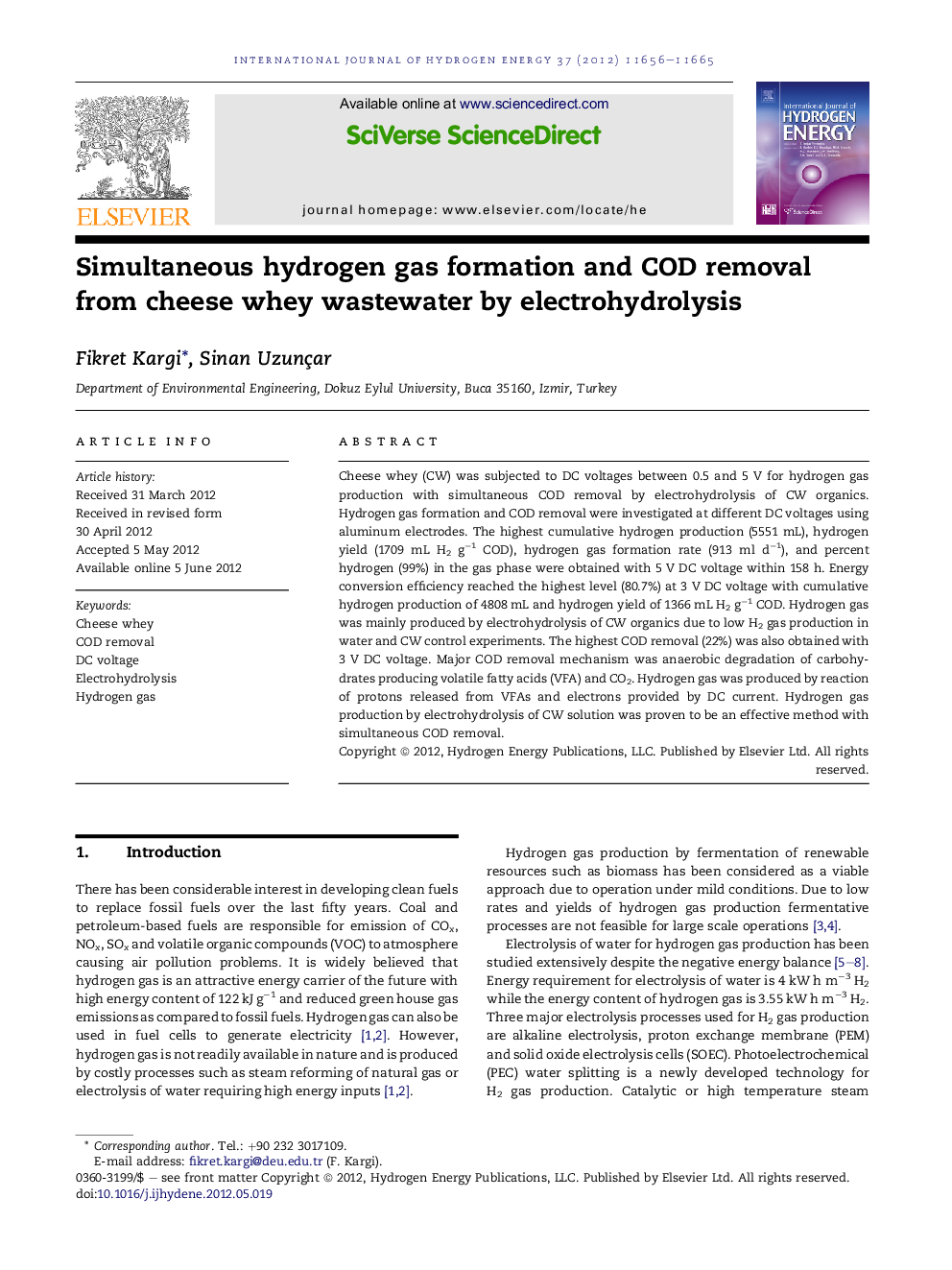| Article ID | Journal | Published Year | Pages | File Type |
|---|---|---|---|---|
| 1275034 | International Journal of Hydrogen Energy | 2012 | 10 Pages |
Cheese whey (CW) was subjected to DC voltages between 0.5 and 5 V for hydrogen gas production with simultaneous COD removal by electrohydrolysis of CW organics. Hydrogen gas formation and COD removal were investigated at different DC voltages using aluminum electrodes. The highest cumulative hydrogen production (5551 mL), hydrogen yield (1709 mL H2 g−1 COD), hydrogen gas formation rate (913 ml d−1), and percent hydrogen (99%) in the gas phase were obtained with 5 V DC voltage within 158 h. Energy conversion efficiency reached the highest level (80.7%) at 3 V DC voltage with cumulative hydrogen production of 4808 mL and hydrogen yield of 1366 mL H2 g−1 COD. Hydrogen gas was mainly produced by electrohydrolysis of CW organics due to low H2 gas production in water and CW control experiments. The highest COD removal (22%) was also obtained with 3 V DC voltage. Major COD removal mechanism was anaerobic degradation of carbohydrates producing volatile fatty acids (VFA) and CO2. Hydrogen gas was produced by reaction of protons released from VFAs and electrons provided by DC current. Hydrogen gas production by electrohydrolysis of CW solution was proven to be an effective method with simultaneous COD removal.
► H2 gas production and COD removal was realized by electrohydrolysis of cheese whey. ► Effects of DC voltage on H2 gas formation and COD removal was investigated. ► High volumes of H2 gas formation with high rates and yields were obtained.
